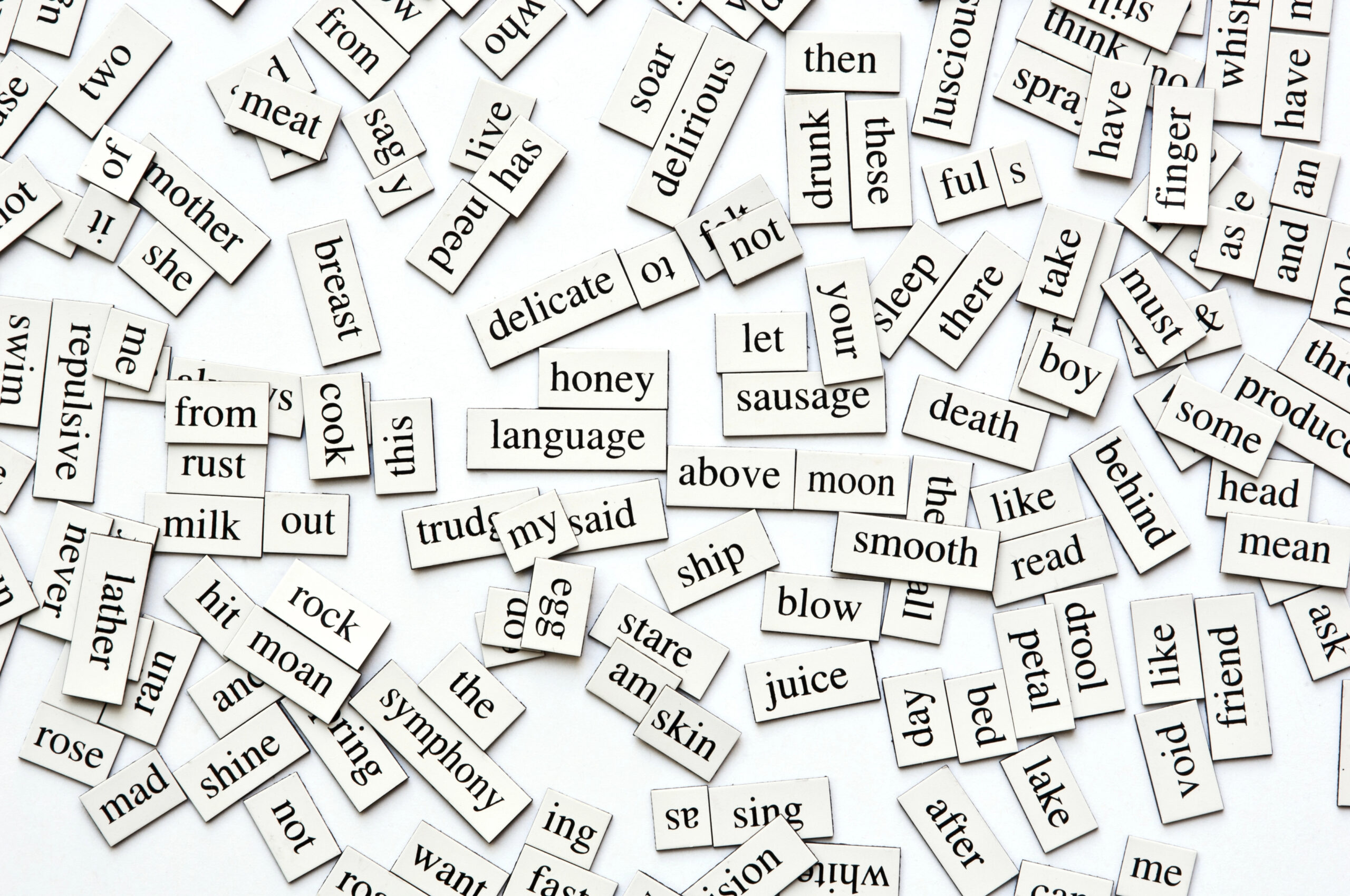When considering whether to buy something online, readers don’t want to feel overwhelmed and flattened, or just plain bored, by too much copy. And as a business owner, you probably feel shy or nervous about giving too much.
Yet, it’s been shown over and over again that for complex or significant purchases, you need to give people enough information to feel safe enough to buy.
My stance has been that sales pages are not “long” or “short” but simply “complete” or “incomplete.” Have you given the information your potential customers need or not?
It gets complicated because different personalities need different things. Some people love testimonials and stories, some don’t. Some love facts and figures, some get bored by those. Some love bullet points, others fuzz out. And everyone wants a particular combination, and no one wants everything.
Add the simple fact that it just takes a certain number of words to get the point across, thus you end up with a good deal of copy.
Up until fairly recently, the only way you could provide the information people wanted was in a single long page. Thankfully, newer technology in web design has made it easier to organize all that copy.
Here are three examples.
Chris Guillebeau’s Unconventional Guides
Chris Guillebeau blogs at the Art of Nonconformity, and part of his business includes what he calls “Unconventional Guides.”
The example I picked is for his “Break Out of the 9-5″ Guide.”
He and his web designer Reese cooked up a unique way of presenting the information. By having a series of panels that slide sideways you get the information you need easily, without having to scroll through a long page.
It seems really short, but let’s total it up. He has an overview page, a What’s Included page, a Guarantee page, and a four-minute video which transcribes into about two pages of copy. Then when you click “buy” you see another two pages of the versions you can buy.
All told, about seven pages of copy for a $50 product. It seems super short because of how it’s presented, but it’s still a solid amount of copy.
What’s missing: He includes no testimonials. Which is an okay decision at the price point, except for those in his audience who need to feel connected to other people through their stories in order to feel safe to buy.
He’s been fabulously successful with it, so who am I to tell him to add one of those sliding panels for testimonials and case studies? Still, that’s what I would do.
Nice job, eh?
Tad Hargrave’s Radical Business Intensive
Tad teaches marketing for hippies, and his main site is Radical Business. What caught me was the way he presented his Radical Business Intensive.
The Intensive is a three-day, in-person training, and so is a considerably higher commitment than a digital product. Similar to what Chris and Reese did above, Tad spreads the information out over several pages. The difference is he dedicated an entire website to this offer.
There are seven links on the site, Home, which is the overview of the course, Testimonials, Is It Right For You?, Course Materials, Free Stuff, Price, Bio.
There is a LOT of copy on the site, including several videos, all of which obviously took a lot of time and care to create. Tad takes the Intensive on the road throughout Canada (hopefully he’ll bring it to the U.S. as well), and so this serves as a permanent information center for each time he does a tour.
You’ll notice the testimonials are separated out, and there’s an entire web page devoted to explaining the “Pay What You Can” model of pricing. I really like how each reader can zero in on the kind of information he or she needs.
A big part of what causes negative reactions on sincere and honest sales pages are when someone gets too much unwanted information. If you don’t give a hoot about testimonials, scrolling through a bunch of testimonials is going to raise red flags, no matter how sincere they are.
If you need to read stories, then a long list of bullet points is going to bore you, making you wonder if what’s being offered is going to bore you, too.
I think Tad does an excellent job separating it all out, and presenting the amount of information someone would need to decide whether to spend three and a half days at a training of his.
Our Own Opening the Moneyflow Year-Long Course
This year we’re running the sold-out year-long Opening the Moneyflow course for sixty people. When I went to write the sales page, I struggled with how to get folks the information they needed without overwhelm.
Thankfully, our designer Adam Kayce told us about a collapsible elements plug-in for WordPress. Collapsible text means that if you click on a link, instead of taking you to another webpage, more text appears instantly. Click again and it disappears.
Adam uses the same plugin brilliantly on his own services page.
Aha! We used it in three ways on the sales page to provide some relief. First, I wrote a “short story” version of the sales page and put it in collapsible elements at the top. Click the link and six short paragraphs, including the price, appear and give you the overview.
Second, I put all the testimonials in collapsible text. If you want’em, there they are, easily accessible without any delay. But since good testimonials tell a story, they take up space, and this way they don’t lengthen the page.
Third, near the bottom of the page I describe the curriculum for the year which is divided into different classes. Each class has a short overview, with, you guessed it, more information in collapsible text. You can scan through the entire year quickly, and yet at any moment dive in for more information.
Finally, in the side bar near the top, we have a link “Do you want to jump right to the price?” In case the reader hasn’t opened the short story version. Clicking that link that will take them to the summary at the bottom to see what’s included and the cost, with another link to jump back to the top.
Copy Is One Thing, Organization Is Another
I’m always impressed by great copy, so it was a real struggle for me to lay that consideration aside and just focus on organization.
Do you have an example of great information organization on a sales page, or some interesting ways web technology and programing was used to make the flow easier?
p.s. The Heart of Money starts tomorrow.
Last chance until 2011 to jump in. The Heart of Money Transformational Journey.
p.p.s. Hey, did you know we have three fantastic practitioners ready to roll up their sleeves and help you with your business?
Well, one at a time, of course. But they’re there. Come meet Judy, Jason, and Yollana.







44 Responses
Heya Mark,
Just a small usability tip, for those collapsible headings, it’s helpful to use the “+” symbol or an arrow in front of the link. These are the most widely used indicators that the link will expand downward instead of taking you to a new page.
The reason to let the reader know that is because the usual (expected) behavior for a link is to take me to another page. If I’m reading something long, I don’t want to click away because I’ll lose my place, so something to indicate that they won’t be taken away will make it safer to click. You wouldn’t want readers to skip clicking on those sections because they are afraid of losing their place (or, using right-click “Open In New Window” for the links and being confused when they get the exact same page!).
For usability stuff I recommend the book “Don’t Make Me Think” by Steve Krug – it’s informative and it’s also a very entertaining read (and short).
Cheers,
Emma
.-= Emma McCreary’s lastest post: Create Your Own Apprenticeship =-.
Thanks for that, Emma. I hadn’t seen that before on a web page with collapsible text, so it’s a great tip- I’m curious how wide-spread it is, just because I have seen quite a few expandable elements, and I can’t recall a single + used, unless I was just totally unobservant.
I’ve seen it most in collapsible/expandable menus (tree-view navigation) – but the first Google result for “collapsible headings” leads me to this example which uses the + symbol:
http://www.webreference.com/programming/css_content/
The fourth result shows an arrow being used:
http://www.filamentgroup.com/lab/expand_and_collapse_content_accessibly_with_progressive_enhancement_jquery/
Maybe you didn’t notice, or maybe you have been reading mostly blogs with that plugin that doesn’t implement the use of a symbol by default.
.-= Emma McCreary’s lastest post: Create Your Own Apprenticeship =-.
Cool- thanks for looking that up. I definitely want to make it more obvious that it’s an expandable element and not an external link. Hmmm…
This is awesome!
I’m redesigning my own website right now, so this comes at a great time for me!
I, too, struggle with trying to give my potential clients enough information without overwhelming them.
I love the idea of giving them the option to read or not read different sections of my pages.
I’m alllll about options. 🙂
.-= Rachel Whalley’s lastest post: Transforming Your Energy =-.
Cool- glad you liked them, Rachel. I’ll look forward to seeing what you do with your own pages.
You can see me implementing it now on my Services page: http://fogtofire.com/?page_id=10
I would LOVE to hear feedback!
How well do you think it’s working?
I took Emma’s suggestion, too, and used the + signs. Very important!
.-= Rachel Whalley’s lastest post: Why Are You Here? =-.
There you go- you added them right in. Nice usage of the technology.
Eh…..
The concept sounded magnificent from your description, but none of the pages I clicked on pulled me in to read more.
Now to be fair, when I clicked on the links I did so to see how the website functioned, not because I was thinking of buying the products. So I’m not a good case study.
Call me old-fashioned, but I think the pages lacked emotional pull.
I don’t see the problem with a long page. I know how they work and I expect to scroll down. I’m unaccustomed to this format and uninterested in the initiation process. And another thing: no trees sacrificed in online marketing–so why not a long page.
These plug-ins are interesting, offering new ways to design websites. They have potential for something.
But I wouldn’t use them on a sales page until large percentages of the general public are accustomed to them.
Diana Schneidman
http://www.StartFreelancingAndConsulting.com : How to take control of your life and make great money quickly as a solopro
Hey Diana
You are certainly welcome to your opinion. Note that I didn’t pick the sales pages for emotional pull or content- simply for organization.
It should be noted that all three sales pages I chose have had a tremendous track record in terms of results for their markets, otherwise I wouldn’t have picked them.
I believe that use of the web has evolved to the point that, if you’re clear with usability issues, that different approaches to organizing information can work very well.
And if you don’t wanna, you don’t hafta. 😉
What I like about these is that they allow me to access the parts I’m interested in and skip the rest. The fact that they’re innovative and technically sophisticated also gives me confidence in the seller.
That’s great to hear, Sue- thanks.
Mark,
this is the first time I read your entire article–very helpful, as I refuse to read those forever sales pages, and am writing my own, so organizing the info differently makes good sense. And I especially appreciated the short and long version of sales copy for the course. first time I had seen it–and it worked well for me
Great! Glad you liked it.
Hey man –
Thanks for the props. I completely agree about finding a way to present as much information as possible without overwhelming the visitor.
And in general, whenever people say they “don’t like” long copy, I say that they are probably just disqualifying themselves from the offer, and that’s fine since maybe it wasn’t a good fit for them anyway. The other thing is that people who are interested in the offer want to read everything they can about it – but you know that.
As for testimonials, we have them on the site, just not that page. I should probably have them on that page too, though – you’re right again.
cg
You’re welcome, Chris- thanks to you and Reese for being so forward-thinking about this.
I like how Sean D’Souza does it here: http://www.psychotactics.com/
I don’t have to read the whole thing. I skim the headlines and dip in wherever it looks interesting. And every time I read a quick blurb, it’s interesting, so I read a bit more, and before long I’m clicking on the “buy” button, even though I didn’t literally read every word.
It’s mostly about ‘does this person sound like they know what they’re talking about?’ and ‘are they answering my objections?’ If yes, and their thing solves a burning problem, then I’m in.
Sometimes I’ll go back and re-read the sales page after I’ve bought the thing, just to get myself excited about it. Yes, I’m a dork.
.-= Kelly Parkinson’s lastest post: In memory of your birthday, which I forgot =-.
I totally re-read sales pages to get my excitement up.
Oh, and chapter one of how-to books too.
Sometimes reviews of books.
Sigh.
.-= Andrew Lightheart @alightheart’s lastest post: Aaah, grow up already. =-.
I learned from Sean for quite a while- have a HUGE respect for the man and what he teaches- and he’s got a big heart, too.
I can be a dork like that, too. 🙂
I like the collapsible text options and loved the sliders; while I’m totally sucked in by Tad’s concept and intensive, I’m not thrilled with his web design. On the other hand, I don’t need to be–I read almost every word. Good food for thought. Thanks, Mark.
Isn’t that interesting that you weren’t thrilled with the web design and yet you read almost every word? Interesting, ain’t it?
You blow me away by how you are able to provide such good content week after week. That’s my comment and I’m sticking to it.
.-= Jennifer Louden’s lastest post: There are no Tests =-.
Thankfully I was able to do it this past week by stealing…errr… borrowing from other people.
I think this is one of those things that maybe works, maybe doesn’t, depending on your audience.
If you’re selling to a crowd who’s mostly tech-savvy/internet-savvy, you’re probably going to have reasonably good luck with it.
If, on the other hand, you’re selling to a less technically oriented group, you may find that having them click on things to see more of the content, or deal with things that slide around on the page, can overwhelm them.
It’s a very subtle shade of gray, perhaps, but it seems important to me.
And it brings up a third “-ographics” that we as website owners and sales-page writers might want to consider about our audience.
The first two, of course, are demographics and psychographics. The new one? Technographics: how technically experienced, aware, and comfortable is your audience?
Me, I’m a geek, and I love playing with things like this. But I do think we always need to consider how new technical things are going to affect our customers’ experience.
One thing I wonder is, did anyone split-test these newfangled ways of presenting information? 😉
.-= Grace Judson’s lastest post: Being a perpetual student =-.
I love the concept of “technographics.” And, it’s true, we haven’t split-test ours. We just liked the fact that it sold out so quickly and easily, but that’s not true testing.
I’m curious about the ‘technographics’ bit- simply because there are so many ways to present things, that if things are clear enough, perhaps even the less technographic can start to access the web in more advanced ways.
Especially if they are presented in ways the mimic or echo off-line forms of information, like chapters in a book.
Grace, what a perceptive comment!
I’ve never seen the word “technographics” before but I plan to add it to my vocabulary.
Love the idea of split testing too.
Diana Schneidman
http://www.StartFreelancingAndConsulting.com : How to take control of your life and make great money quickly as a solopro
Hey Mark
I love this idea of a sales page not being short or long, but complete or incomplete.
I totally don’t mind long sales pages as long as I can navigate around them.
And, yes, as Chris says, if the offer appeals, I’ll stay and read more, if it doesn’t then it’s probably not right for me.
I think the thing people might be tired of isn’t the length of a sales page, but the hype involved.
Long, calm, honest, clear sales pages? Different.
.-= Andrew Lightheart @alightheart’s lastest post: Aaah, grow up already. =-.
I agree with you entirely. People do a tremendous amount of reading… as long as it’s interesting and relevant.
Thanks so much Mark. I was struggling with this exact issue. I’m a person who likes to know the price and then go back into the text to validate the price. I hate scrolling down through things. I also know a lot of people find that valuable. Your information and the information in the comments has been greatly helpful.
.-= Jen’s lastest post: What Is Authentic Anyway? =-.
I know! I struggled with the same thing. That’s why we originally came up with the “jump to the price” link in the sidebar- and then the collapsible text thing made the “short story version” an even easier way to present it.
This is precisely what I talked about three years with my report, “The Death of The Salesletter.” I talked about dynamic information served up based on the user’s needs/choices — not ours. And Web 2.0 (jQuery, etc) allows us to do that.
I also love your comparison of long copy vs. short copy to “complete copy” vs. “incomplete copy.”
For those who want to read my report, and if it’s OK for me to post this (please delete if it’s inappropriate), here it is:
http://www.michelfortin.com/the-death-of-the-salesletter/
Thank you for this discussion.
.-= Michel Fortin’s lastest post: 12 Awesome Resources For Design and Copy =-.
I hear ya- I’m so glad you jumped into this so long ago- thanks for being forward thinking- and contributing here.
It’s totally fine to post it- Happy to have folks check out your link. This is a larger discussion, and I’m hoping other folks have interesting examples to add.
Excellent information…I have been recently working with Omni Biz Solutions to increase my knowledge about web development and this is right on with what they teach.
Too much information definitely overwhelms readers and unorganized content can drive them away.
I believe that big nice looking graphics can play a large role too in keeping the readers interest. I know when I’m reading along and get to a nice looking picture, it’s like getting a break from the reading and re-iterates my interest in continuing.
Thank you for the insight!
Chris
Graphics are a big part of it… that’s one place where I know we here at HoB have been weak. We hope to liven that up moving forward.
Fascinating – thank you – this felt like an unusual post from you & I like the ‘real-life’ examples.
Doesn’t Adam’s site get sexier by the day?? I am SO happy you referred me to him 🙂
Thanks again
Corrina
.-= Corrina Gordon-Barnes’s lastest post: I Feel Too Cluttered To Declutter! =-.
Sometimes I just have to lean into other people to get inspired. 🙂 And yes, Adam’s doing great work over there.
Hey Mark!
Someone you and I both know well brought this comment thread to my attention (smile).
As a copywriter it’s an important discussion, perhaps with far reaching implications about how we “sell our stuff” online. A cultural shift in fact.
Long copy has its place … but people are demanding something different now from the transaction. In terms of how they consume marketing AND the value they get from the marketing itself.
Thanks for picking up the conversation in your usual elegant manner. I hope I’ve continued it with as much grace (winking from over here!).
Karri
I’m sure you have and will, Karri. It’s funny, though- I find most people who take a stand against long copy somewhat deceptive- they often include just as much information or more, just organized differently. I think it would do well for folks to admit that they just need to give a lot of information when an offer is complicated or significant, and give their honest best to organize it in a way that’s most easily accessible. 🙂
Read my white paper on this 😉
The long scrolling letter isn’t the only option. And from the signals I’m getting after putting this together, we as marketers had better answer the call and give people an experience they want.
Folks are pissed. I don’t know any other way to say it. You yourself have started to innovate better ways to make the sale yes? Baby steps or giant steps we have to listen …
It’s so funny, because I have so many different experiences with the “long” format copy. Sometimes people are upset- and yet I’ve also had people print out the page and go over it in a highlighter getting clear on the offer.
What is sometimes upsetting to me is when people claim to be getting rid of the long sales copy- and yet then provide just as much information, just organized differently. And instead of saying, Hey, I’m organizing all of this necessary information so it’s more accessible they instead try to take the position that they aren’t writing long copy. But they are, at least word-count-wise.
And yes, it’s wonderful to see innovation making it easier for folks to access the information they need to make decisions.
Mark, I am in mid of learning conversion optimization, Your tips are indeed definitive and helpful for redesign a website. I had a dropship website and i was feeling nervous when i was receiving 200 visitors without single sales. Single mistake affect a lot on conversion. When they feel overwhelmed, they won’t buy for sure.
It’s so true, Kim- and what a learning process, eh? We’re constantly learning that one ourselves…
Most good sale pages these days are written by professional copy writers. Who know exactly what to write to increase sales.
A large percentage of sale pages in my opinion do not deliver what they promise, especially in the Internet Marketing Niche. Lots of them are way too long, but it works so why change the format.
I always liked the article that you created Mark, always provide inspiration for me, thanks mark